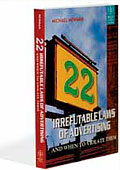 |
THE BOX
By Marc Levinson Princeton University Press
Pp: 376
Price: Rs 1,023 |
A long time ago, in the
early 90s, when my first journalistic job landed me in a mom-n-pop
merchant-shipping magazine, I used to be fascinated by ships.
Whenever I got the opportunity, I would spend hours exploring
the innards of a vessel, right from the ear-splitting engine room
to the cavernous hold to the quiet deck. But not once do I remember
stopping to admire the huge metal boxes that most of them carried.
After all, what's fascinating about a 20- or 40-foot aluminium
box? Well, it seems, I was dead wrong about the shipping container's
sex appeal. I didn't know, for instance, that what went into its
making weren't just corrugated aluminium sheets and some hinges,
but the foresight and uncompromising ambition of one businessman
and the brilliance of another engineer.
The Box is the improbably fascinating story of how the two merged
to create modern shipping's most important phenomenon: containerisation.
Published to coincide with the 50th anniversary of the first container
voyage in 1956, The Box is the story of a man called Malcom Purcell
McLean, who began his career stocking shelves at a local grocery
in a North Carolina town but soon became a trucking magnate. But
McLean's ambitions went well beyond owning a fleet of trucks.
When business became fiercely competitive and highways congested
in post-World-War-II America, McLean, always paranoid about costs,
began focusing on ways to make his trucking service even more
competitive. In one of his many Eureka moments, McLean came up
with the idea of sending his trucks by coastal ships to cities
up on the East Coast from North Carolina.
But there was a problem: The US of 1950s did not allow trucking
companies to also own ships. Thanks to clever legal and financial
manoeuvring, McLean was able to circumvent the rules and buy one
of the largest shipping lines in the US, Waterman Steamship Corporation.
As Levinson, an economist and a former editor at The Economist,
says it, McLean's original plan was to create roll-on roll-off
ships that would carry his trucks, and reduce costs for customers
by nearly 75 per cent. However, he wasn't entirely happy with
the idea because the truck tyres would eat up vertical space,
besides which he wouldn't be able to stack up trucks one over
another.
Hardly the one to give up on a good idea, McLean orders his
team to come up with a solution, which they find in an engineer
called Keith Tantlinger, a container expert. It is fascinating
how many odds the two had to beat to popularise containers and
create worldwide standards that would allow such boxes to seamlessly
travel from any vessel to any truck anywhere in the world. Read
The Box to find out more. I don't know about you, but the next
time I spot a humble shipping container, I'll be looking at it
with a lot more respect-and pause to think of a man called McLean.
 |
|
22 IRREFUTABLE
LAWS OF ADVERTISING
By Michael Newman
Wiley India
Pp: 266
Price: Rs 399
|
Marketers have a problem on their
hands: Consumers have gotten a lot smarter than they used to be.
That means advertising doesn't quite work the way it once used
to. Even if a consumer were generous enough to set aside her cynicism,
there's just too much clutter for an ad to catch and keep her
attention. So, what are the creative directors to do? First, get
to know the 22 timeless 'laws' of advertising, and know when to
break them. Michael Newman's book gets 22 heavy hitters from the
world of advertising to spell out these laws, and tell readers
when to ignore them. Ian Batey, Jean-Marie Dru, Al Ries, James
Lowther are some of the people whom Newman, former Saatchi &
Saatchi creative director and now head of an ideas company called
brandnewman, invites to write.
Just what are these laws? They range from the Law of Simplicity
to the Law of Humour, and include several others such as the Law
of Nice, and even the Law of Disruption. "Humour is so powerful
in advertising (when it really is funny) because it's a bridge
that links the brand and the consumer," writes Batey. "Laughter,
it's been said, is the shortest distance between two people."
If you are in the business of making ads, it won't hurt you to
read Newman.
|






